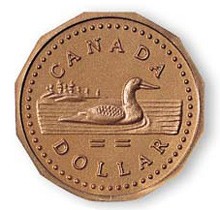
Another fossil discovery with Canadian links. Just like Frank and Gordon.
This time it's the Loon.
The similarity of G. yumenensis to modern birds came as a surprise: Previously, such advanced anatomical features had been seen only in birds that lived during and after the late Cretaceous period — within the last 100 million years. "In short, no one expected to find a bird this modern in rocks this old," Harris says, referring to the shale formation where the team made its discovery. The shale dates to the early Cretaceous period, which occurred between 100 million and 145 million years ago. As a result of the finding, G. yumenensis now has the distinction of being "the oldest-known bird that is really, really modern in its anatomy," he says.
As such, G. yumenensis may help fill in gaps in the branch of the evolutionary tree that gave rise to today's birds. Specifically, scientists are looking to G. yumenensis for present-day evidence of whether modern birds originated in aquatic or terrestrial habitats.
An artist's reconstruction shows Gansus yumenensis in a lake in China's Gansu province. The bird probably had the ability to dive and swim underwater, much like modern loons or grebes. Illustration by Mark A. Klingler, courtesy of the Carnegie Museum of Natural History.
"The most primitive living birds — for example, ostriches, rheas, and chickens — tend to be terrestrial" and therefore would seem to hint that today's birds got their start on land, says Matthew Lamanna, a research team member from the Carnegie Museum of Natural History in Pennsylvania. Yet two other features of G. yumenensis — webbed feet and a large crest on its lower leg bone that would have provided a strong anchor for leg muscles — suggest the bird was aquatic and had the ability to dive and swim underwater like loons or grebes. According to You's research team, this supports the idea that modern birds actually originated in water habitats.
Also See:Fossils
Prehistoric
Dinosaurs
Find blog posts, photos, events and more off-site about:
G., yumenensis, loon, prehistoric-birds, prehistoric, bird, loonie, China, Canada, fossil, fossils, palentology,
dinosaurs,
No comments:
Post a Comment